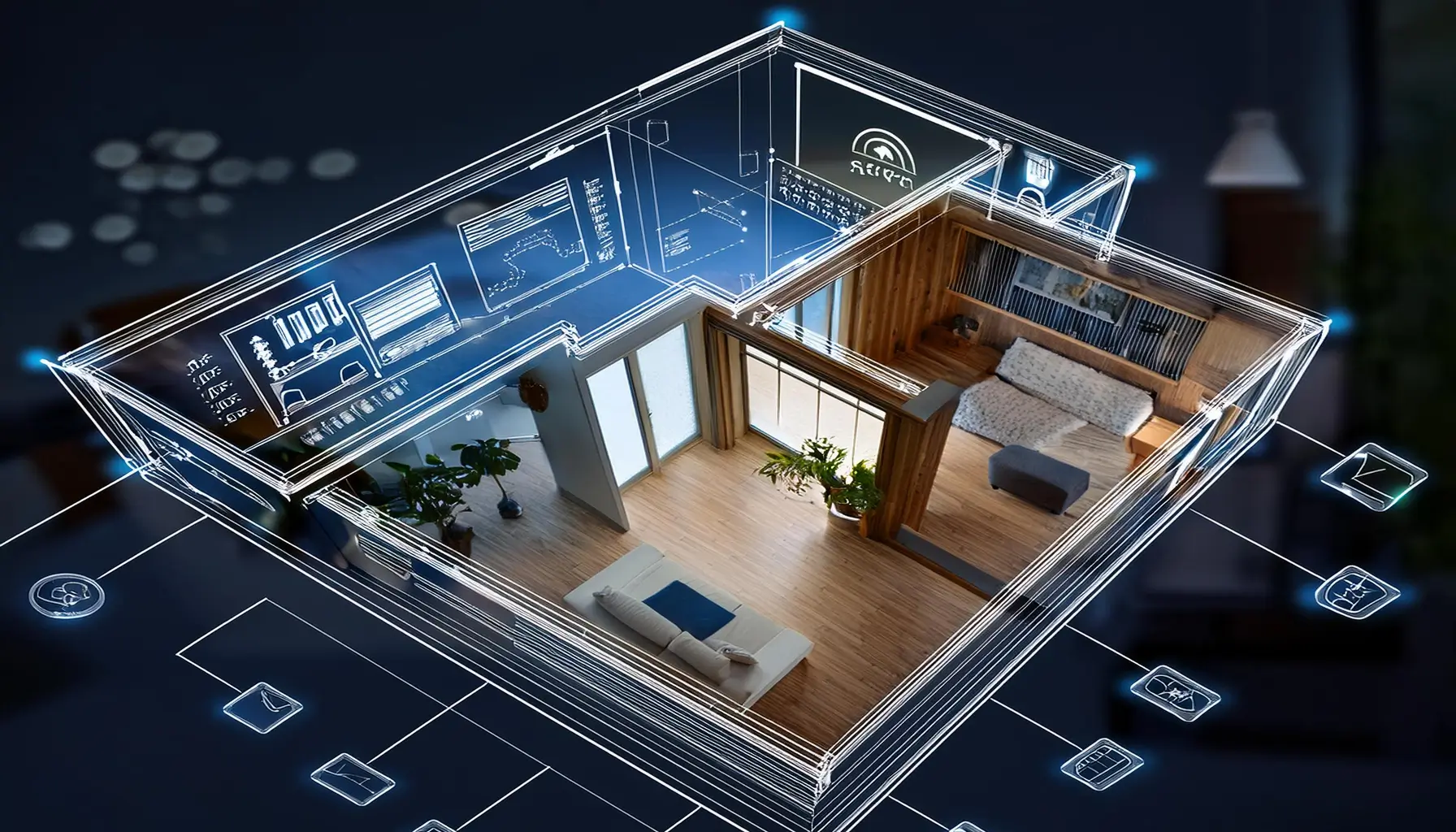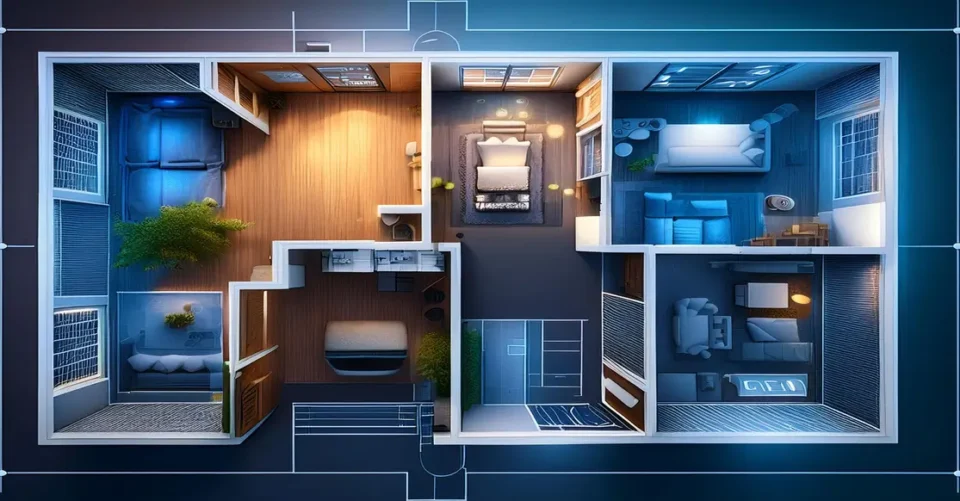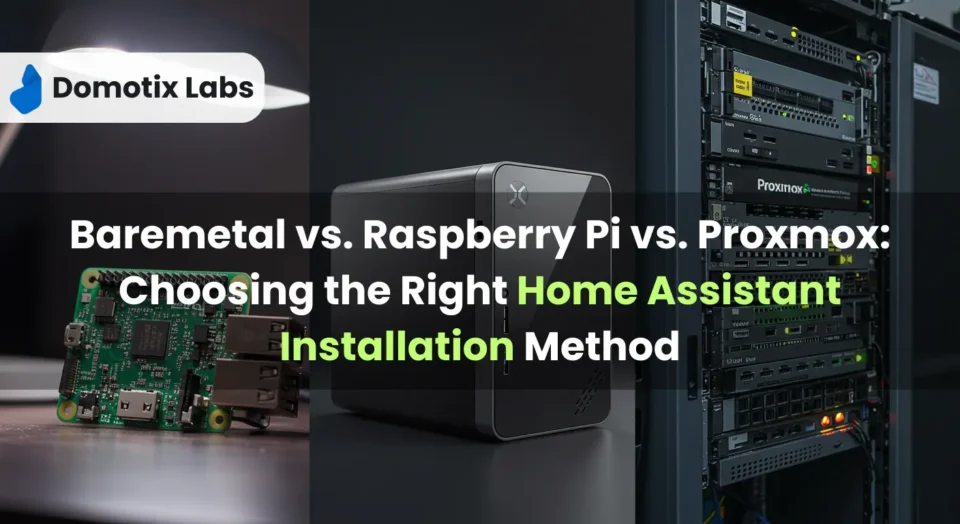In the evolving landscape of smart home technology, the need for more intuitive, immersive, and user-friendly interfaces is becoming increasingly evident. As more households adopt smart home devices, homeowners are seeking better ways to manage and interact with their connected systems. Enter 3D Floor plan home assistant—a game-changing innovation that is transforming how we experience and control our smart homes.
Introduction to Home Assistant 3D Floor Plan
Home Assistant 3d floor pan in the context of smart homes refers to the use of three-dimensional models and interactive floor plans to represent a home’s layout and its various connected devices. Unlike traditional flat dashboards, which display information in a 2D format, 3D Floor Plan provide a more realistic and engaging way to monitor and control home automation systems.
This technology allows users to navigate through a virtual representation of their home, where they can see the location and status of smart devices, control them with simple gestures, and even simulate different scenarios. For instance, you can visualize your living room lighting, adjust the brightness, or see how your security cameras are positioned—all within a 3D space.
Benefits of 3D Floor Plans in Home Automation
Enhanced User Experience:
- 3D floor plans offer a more immersive and intuitive interface, making it easier for users to interact with their smart home devices. The visual representation of the home in three dimensions helps users understand the spatial relationships between different devices, leading to more informed decisions and better control.
Improved Control:
- Navigating a 3D model of your home allows for precise control over your devices. Instead of scrolling through lists of devices or navigating through multiple screens, you can simply click on a device within the 3D space to control it directly. This level of interaction reduces the complexity and makes smart home management more straightforward.
Visual Appeal:
- A well-designed 3D floor plan is not only functional but also aesthetically pleasing. It adds a layer of sophistication to your home automation system, making it something you’ll want to show off. The visual appeal of 3D models can also make the system more engaging for all users, including those who might be less tech-savvy.
Customization and Personalization:
- 3D floor plan visualization in home assistant allows for extensive customization. Users can personalize their virtual home environment to match their actual home, adjusting colors, materials, and layouts. This personalization extends to the control of devices, where users can create Home Assistant 3d floor custom scenes and automations based on their unique preferences.
Case Study: Domotix Labs Leading the Way
Domotix Labs is at the forefront of integrating 3D floor into smart home automation. Specializing in custom home assistant 3D floor plan services, Domotix Labs transforms traditional Home Assistant dashboards into interactive, immersive experiences that redefine how users interact with their smart homes.
While Home Assistant itself doesn’t come with built-in 3D floor plan features, Domotix Labs uses innovative approaches to bring this functionality to life. By leveraging cutting-edge software and design techniques, they create 3D models that are not only accurate but also seamlessly integrated with the Home Assistant platform.
These custom 3D floor plans provide homeowners with an unparalleled level of control and insight into their smart home systems. Whether it’s adjusting lighting, monitoring security, or controlling HVAC systems, everything becomes more accessible and manageable within the 3D environment.
The Future of Smart Homes with 3D Visualization
As technology continues to evolve, the potential for 3D floor visualization in smart homes is vast. We can expect to see further integration of augmented reality (AR) and virtual reality (VR) technologies, offering even more immersive experiences. Imagine walking through a virtual version of your home, adjusting settings with a wave of your hand, or using AR to overlay real-time data onto your physical environment.
The future may also see advancements in AI-driven automation, where 3D visualizations are combined with machine learning algorithms to predict and automate tasks based on user behavior. This could lead to smart homes that not only respond to commands but also anticipate needs and preferences, providing a truly personalized living experience.
How Domotix Labs is Shaping the Future
Domotix Labs is not just keeping pace with these advancements—they are driving them. By continually refining their home assistant 3D floor plan services and exploring new technologies, they are ensuring that their clients are always at the cutting edge of smart home innovation. As more homeowners seek to enhance their living spaces with smart technology, Domotix Labs is positioned to be a leader in this transformative field.
Conclusion
3D floor in Home Assistant is more than just a technological novelty; it’s a significant leap forward in how we manage and interact with our smart homes. With companies like Domotix Labs leading the charge, the future of smart home automation looks more immersive, intuitive, and efficient than ever before. As 3D floor plan become more prevalent, homeowners can expect to see their smart home systems evolve into even more powerful tools for enhancing comfort, security, and convenience.




